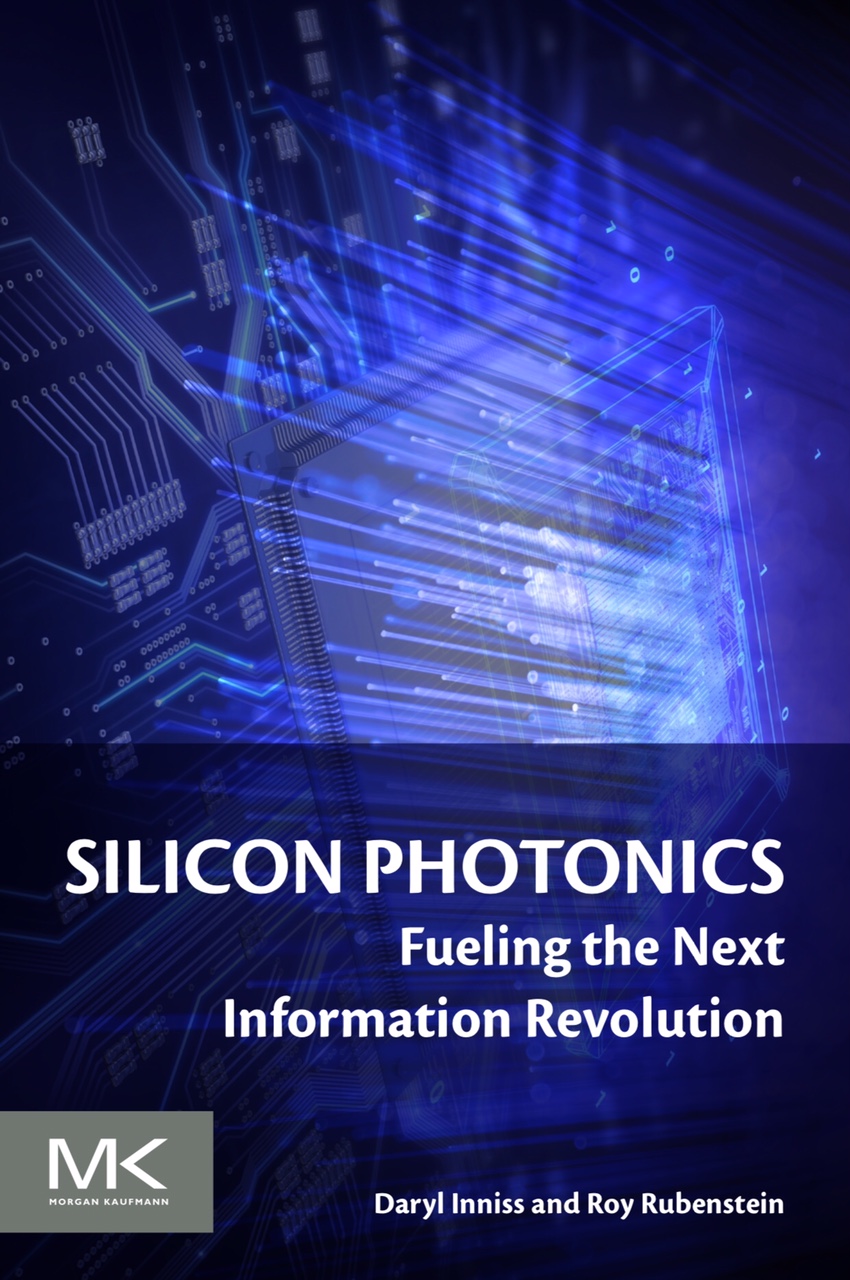Mario Paniccia: We are just at the beginning
 Monday, May 23, 2016 at 9:20AM
Monday, May 23, 2016 at 9:20AM 
Published book, click here
 Monday, May 23, 2016 at 9:20AM
Monday, May 23, 2016 at 9:20AM  Thursday, May 12, 2016 at 6:21AM
Thursday, May 12, 2016 at 6:21AM LightCounting Market Research’s recent report on optical integration investigates the global market opportunity for integrated optical components including silicon photonics for the next five years. An interview with LightCounting CEO and report author, Vladimir Kozlov.
LightCounting’s report on photonic integration has several notable findings. The first is that only one in 40 optical components sold in the datacom and telecom markets is an integrated device yet such components account for a third of total revenues.

Another finding is that silicon photonics will not have a significant market impact in the next five years to 2021, although its size will grow threefold in that time.
By 2021, one in 10 optical components will be integrated and will account for 40% of the total market, while silicon photonics will become a $1 billion industry by then.
Integrated optics
“Contrary to the expectation that integration is helping to reduce the cost of components, it is only being used for very high-end products,” says Vladimir Kozlov, CEO of LightCounting.
 Friday, May 6, 2016 at 7:56AM
Friday, May 6, 2016 at 7:56AM Silicon photonics luminaries series
Interview 1: Andrew Rickman
Silicon photonics has been a recurring theme in the career of Andrew Rickman. First, as a researcher looking at the feasibility of silicon-based optical waveguides, then as founder of Bookham Technologies, and after that as a board member of silicon photonics start-up, Kotura.
 Andrew Rickman
Andrew Rickman
Now as CEO of start-up Rockley Photonics, his company is using silicon photonics alongside its custom ASIC and software to tackle a core problem in the data centre: how to connect more and more servers in a cost effective and scaleable way.
 Friday, April 29, 2016 at 9:33AM
Friday, April 29, 2016 at 9:33AM NeoPhotonics has begun sampling its CFP2-ACO, a pluggable module for metro and long-haul optical transport.
The company demonstrated the CFP2-ACO module transmitting at 100 gigabit using polarisation multiplexed, quadrature phase-shift keying (PM-QPSK) modulation at the recent OFC show. The line-side module is capable of transmitting over 1,000km and also supports PM-16QAM that doubles capacity over metro network distances.
Ferris LipscombThe CFP2-ACO is a Class 3 design: the control electronics for the modulator and laser reside on the board, alongside the coherent DSP-ASIC chip.
At OFC, NeoPhotonics also demonstrated single-wavelength 400-gigabit transmission using more advanced modulation and a higher symbol rate, and a short-reach 100-gigabit link for inside the data centre using 4-level pulse-amplitude modulation (PAM4) signalling.
 Tuesday, April 12, 2016 at 2:52PM
Tuesday, April 12, 2016 at 2:52PM Lumentum has unveiled several optical white-box designs. To date the adoption of white boxes - pizza-box sized platforms used in large-scale data centres - has been at the electronic layer, for switching and routing applications.
Brandon Collings
White boxes have arisen to satisfy the data centre operators’ need for simple building-block functions in large number that they can direct themselves.
“They [data centre operators] started using very simple white boxes - rather simple functionality, much simpler than the large router companies were providing - which they controlled themselves using software-defined networking orchestrators,” says Brandon Collings, CTO of Lumentum.
 Monday, April 4, 2016 at 8:42AM
Monday, April 4, 2016 at 8:42AM The need for terabits of capacity to link Internet content providers’ mega-scale data centres has given rise to a new class of optical transport platform, known as data centre interconnect.
 Source: ADVA Optical Networking
Source: ADVA Optical Networking
Such platforms are designed to be power efficient, compact and support a variety of client-side signal rates spanning 10, 40 and 100 gigabit. But this poses a challenge for design engineers as the front panel of such platforms can only fit so many lower-rate client-side signals. This can lead to the aggregate data fed to the platform falling short of its full line-side transport capability.
 Wednesday, March 30, 2016 at 7:51AM
Wednesday, March 30, 2016 at 7:51AM In his new book, The Great Acceleration, Robert Colvile discusses how things we do are speeding up.
In 1845 it took U.S. President James Polk six months to send a message to California. Just 15 years later Abraham Lincoln's inaugural address could travel the same distance in under eight days, using the Pony Express. But the use of ponies for transcontinental communications was shortlived once the electrical telegraph took hold. [1]
The relentless progress in information transfer, enabled by chip advances and Moore's law, is taken largely for granted. Less noticed is the progress being made in integrated photonic chips, most notably by Infinera.